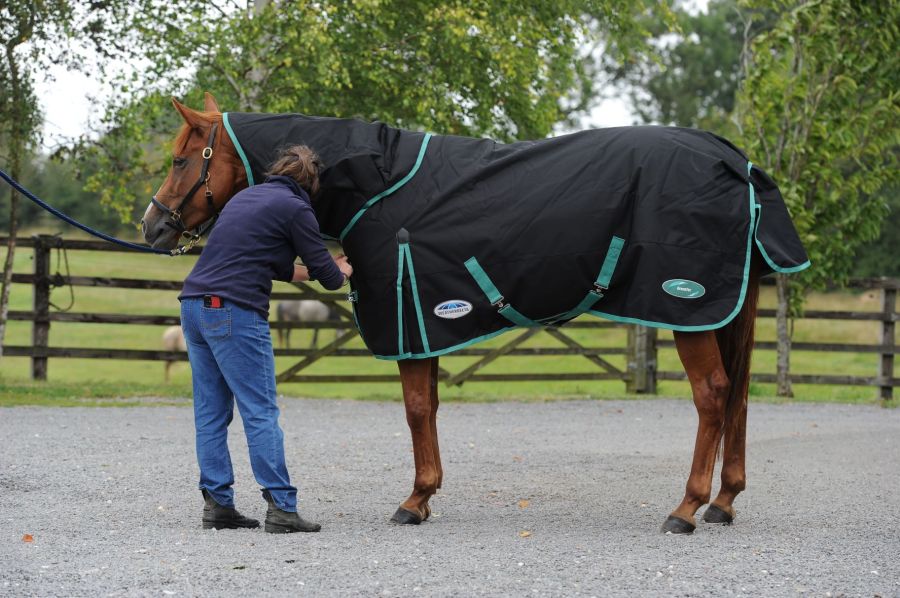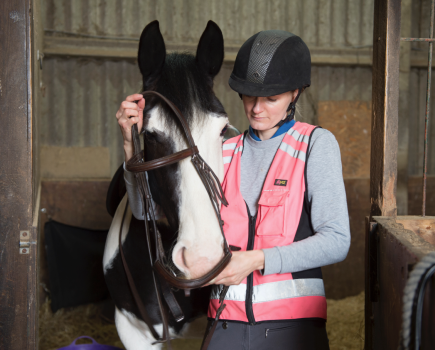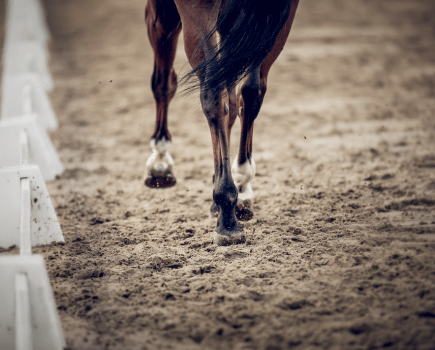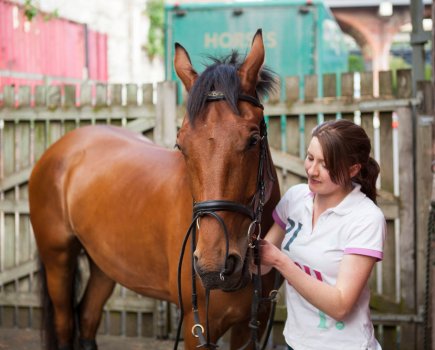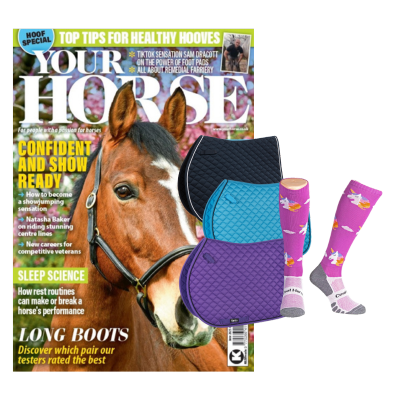Do you know how to fit a horse blanket? When it comes to ensuring they’re comfortable, it’s important to understand how horse rug sizes work – the right rug in the wrong size won’t be able to do its job properly. Rugs are an investment and making sure you have the right rug, correctly fitted will hopefully mean your rug will last for years. In this article, we share a video on how to achieve the perfect rug fit, plus top tips for measuring your horse for a new rug and further details on checking your horse’s rug is the right size.
In the below video, Your Horse Gear Guide editor Allison Lowther shares her insight into checking rug fit. She explains how you can ensure your horse’s rug won’t move, rub or restrict their movement. She then shows how the front chest straps should be adjusted, where the rug should sit on the wither, the current cross surcingle use and the fastening of leg straps. Finally, she shares how to check the rug’s fit and length.
How to measure your horse
It’s important to make sure you buy the right size rug for your horse. Here’s how to work out his size:
- Using a length of string, measure from the middle of your horse’s chest around his shoulder and all the way along his side and around to the point of buttock.
- Cut or tie a knot in the length of string. Measure the string to find out what size rug your horse is.
- Rugs are normally measured in feet and inches but will usually quote the size in centimetres too. Another measurement to take is the back seam length — this is from the top of the withers to the top of the tail.
Correct fit: Top to tail coverage
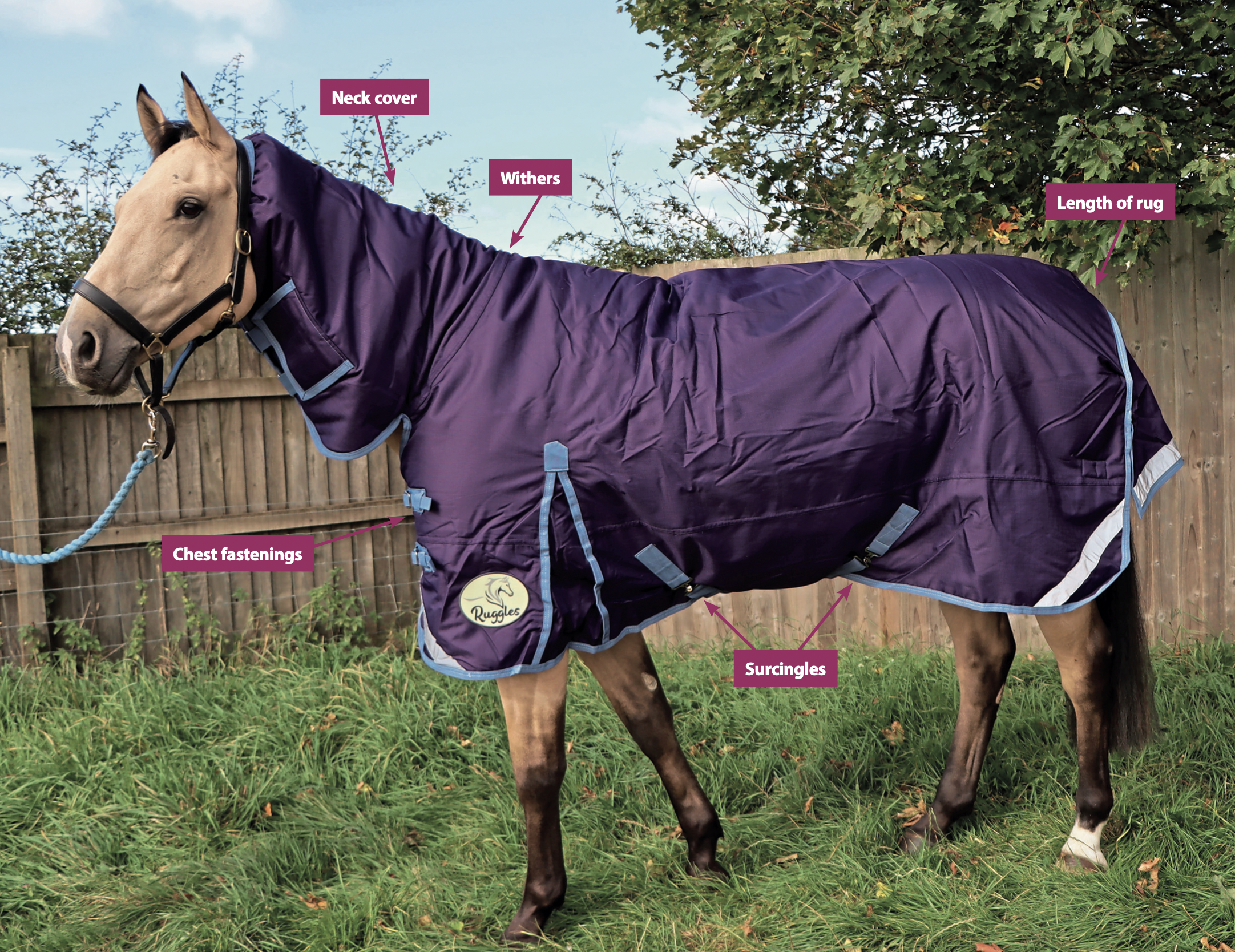
A rug that fits well will cover your horse from the back of his ears, or wither, to the top of his tail. The overall impression should be that it follows the contours of his body without being too tight and restrictive. It should also be a good depth. A rug that’s too big may slip causing discomfort, and can be dangerous.
If you’re not sure what you should be checking, here are some key areas to pay attention to when fitting a rug:
Chest fastenings
The rug should be roomy enough to do the front fastenings up without putting pressure on your horse’s chest. Once fastened, you should be able to easily slide your hand inside the rug, down the side of his shoulder and around his chest with no restriction.
Withers
To avoid rubbing and pressure, the rug should sit two to four inches in front of your horse’s withers.
The surcingles
Adjust and fasten the surcingles so that you can fit a hand’s width between your horse’s belly and the surcingles. Too tight and it will pull the rug down onto your horse’s withers, which may cause rubbing. Too loose and when your horse rolls he may get a leg caught in them.
Leg straps
Not all rugs have them, some will just have a fillet string. Careful adjustment is needed so your horse can move freely, but so they’re tight enough that there’s no danger of him getting caught in them when he rolls. Loop one leg strap around his back leg and fasten it to the ‘D’ rung on the same side. Repeat on the other side, passing the second leg strap through the first so they’re linked before fastening. The straps should be adjusted to allow a hands’ width between your horse’s thigh and the strap.
Neck cover
The length of the neck cover should be sufficient to ensure that none of your horse’s neck is exposed to the elements when he’s grazing. The depth of the neck cover is also important — if it’s too tight it is likely to rub his mane.
The right length
The rug should finish at the top of your horse’s tail, although some rugs are shaped around the hindquarters for a better fit.
The right depth
Take a step back and see how deep the rug is. It should come down your horse’s sides far enough so that you can’t see their belly. If the rug isn’t deep enough it will look like a miniskirt, exposing some of their tummy to the elements.

